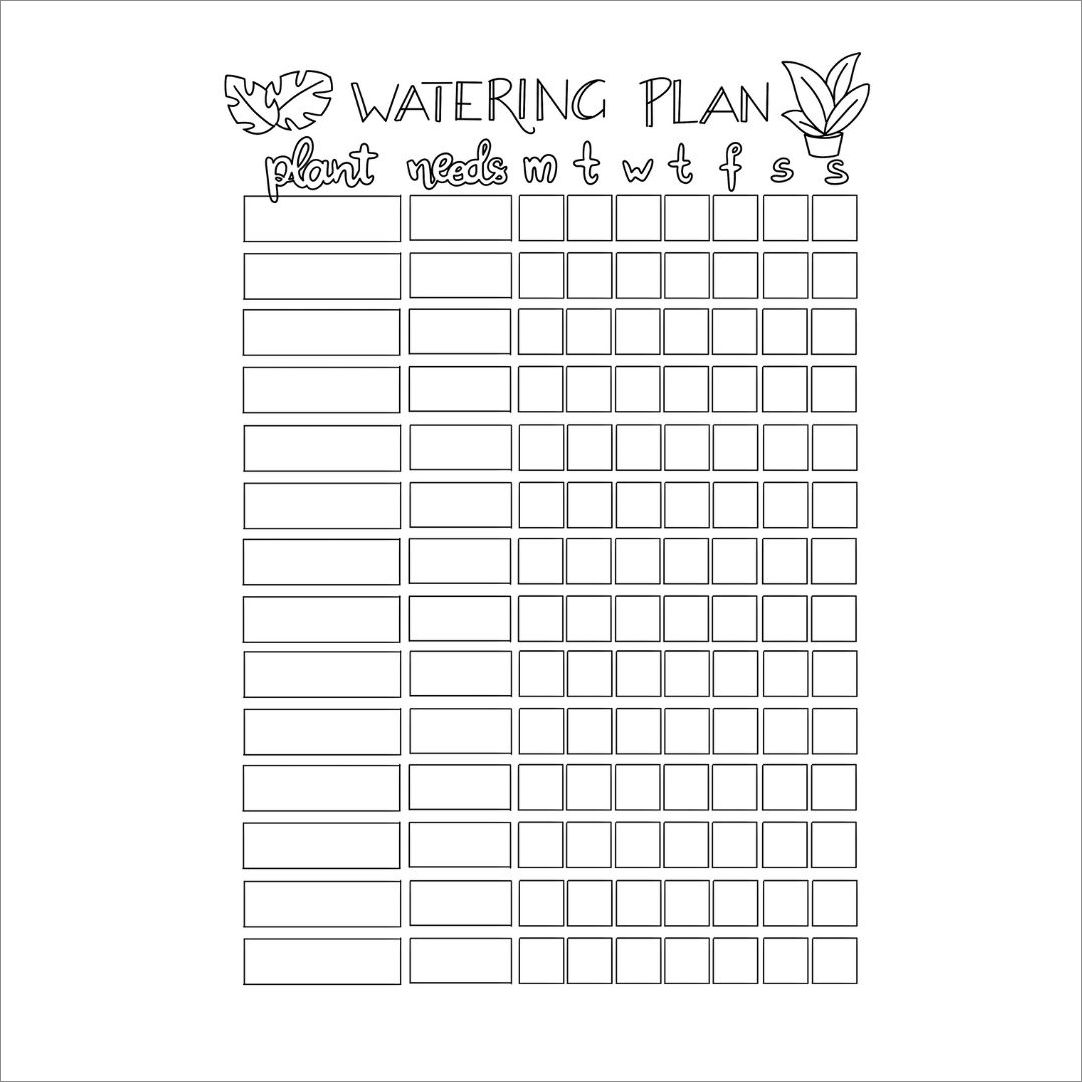Taking care of your plants involves more than just watering them whenever you remember. To ensure their optimal growth and health, it’s important to establish a plant watering schedule that meets their specific needs.
In this guide, we will explore the different factors to consider when creating a watering schedule, as well as provide tips and examples to help you get started.
Understanding the Importance of a Plant Watering Schedule
Creating a plant watering schedule is crucial for several reasons. First and foremost, it helps prevent overwatering or underwatering, which are common causes of plant stress and even death. By providing your plants with the right amount of water at the right time, you can ensure their roots receive the necessary nutrients and oxygen, promoting healthy growth.
A watering schedule also helps you establish a routine and maintain consistency in caring for your plants. This is particularly important if you have a large garden or multiple plants, as it can be easy to forget when each plant needs watering. By following a schedule, you can prevent under or over-watering certain plants, resulting in a more balanced and thriving garden.
Factors to Consider When Creating a Plant Watering Schedule
When creating a plant watering schedule, it’s important to consider several factors. These factors include the type of plant, its age, the climate, the soil type, and the size of the container or planting area. Let’s explore each of these factors in more detail:
1. Type of Plant
Different plants have different watering needs. Some plants, such as succulents, prefer drier conditions and can tolerate longer periods between waterings. On the other hand, plants like ferns and tropical plants require more frequent watering. Research the specific watering requirements of each plant in your garden to ensure you meet their individual needs.
2. Age of the Plant
Young plants generally require more frequent watering than mature plants. This is because their root systems are still developing and may not be able to extract water efficiently from the soil. As plants grow and establish themselves, their watering needs may decrease. Adjust your watering schedule accordingly as your plants mature.
3. Climate
The climate in which your plants grow plays a significant role in determining their watering needs. In hot and dry climates, plants may require more frequent watering to compensate for the increased evaporation rate. Conversely, in cooler and more humid climates, plants may need less frequent watering. Consider the natural rainfall patterns and temperature ranges in your area when creating a watering schedule.
4. Soil Type
Different soil types have different water-holding capacities. Sandy soils drain quickly and may require more frequent watering, while clay soils retain moisture for longer periods and may require less frequent watering. Understanding your soil type can help you adjust your watering schedule accordingly to ensure your plants receive the right amount of water.
5. Size of Container or Planting Area
Plants grown in smaller containers or confined planting areas may require more frequent watering. This is because the limited space restricts the amount of soil available for water storage. Larger containers or planting areas, on the other hand, can hold more water and may require less frequent watering. Consider the size of your containers or planting areas when establishing your watering schedule.
Tips for Creating a Plant Watering Schedule
Now that you understand the factors to consider, here are some tips to help you create an effective plant watering schedule:
- Observe your plants: Pay attention to signs of under or over-watering, such as wilted leaves or yellowing foliage. Adjust your watering schedule accordingly to address these issues.
- Water deeply: When you water your plants, make sure to provide enough water to saturate the soil and reach the roots. Shallow watering can lead to shallow root growth and make plants more susceptible to drought.
- Water in the morning: Watering your plants in the morning allows the foliage to dry off during the day, reducing the risk of fungal diseases. Avoid watering in the evening, as the prolonged moisture can promote fungal growth.
- Use mulch: Applying a layer of mulch around your plants can help retain moisture in the soil, reducing the frequency of watering. Mulch also helps regulate soil temperature and suppresses weed growth.
- Consider using a moisture meter: A moisture meter can help you determine when your plants need watering. Insert the probe into the soil and check the moisture level indicated on the meter.
- Adjust your schedule seasonally: As the seasons change, so do the watering needs of your plants. Increase or decrease the frequency of watering based on the temperature and rainfall patterns.
Sample Plant Watering Schedule
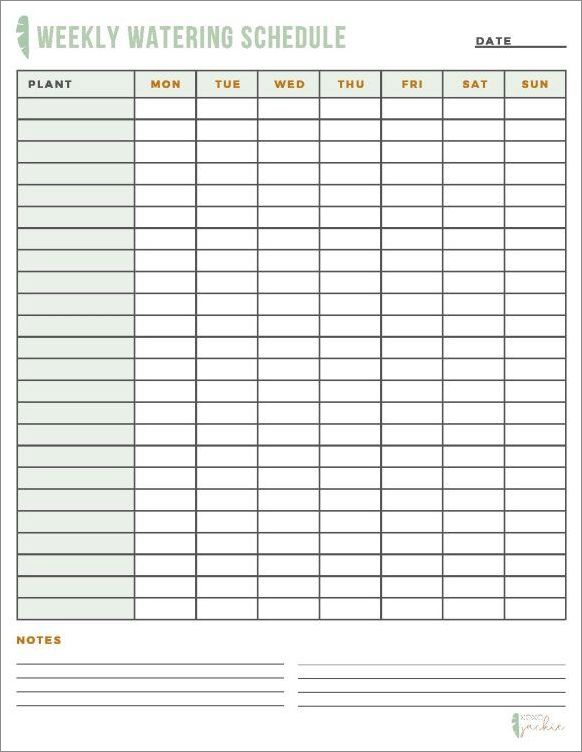
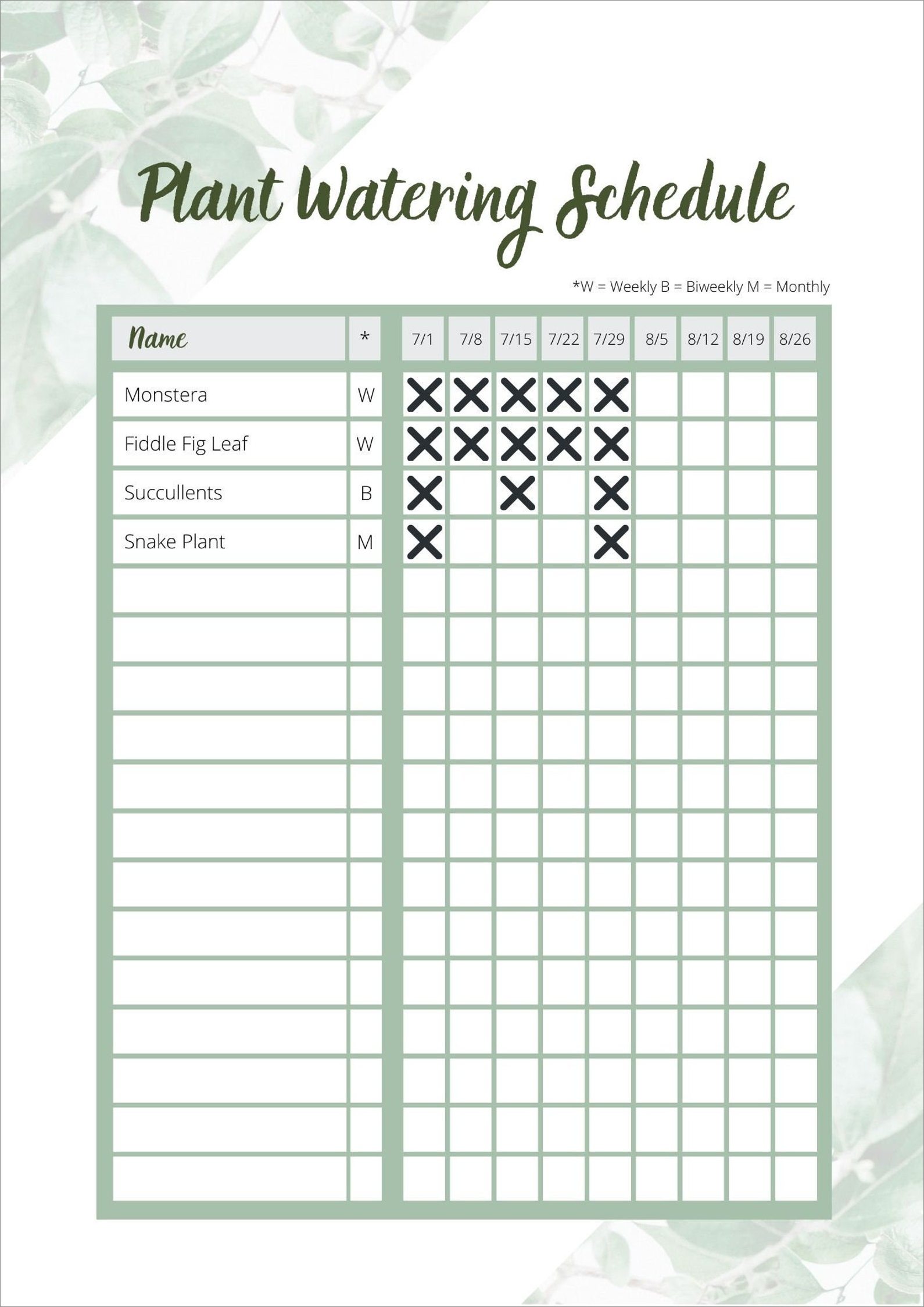
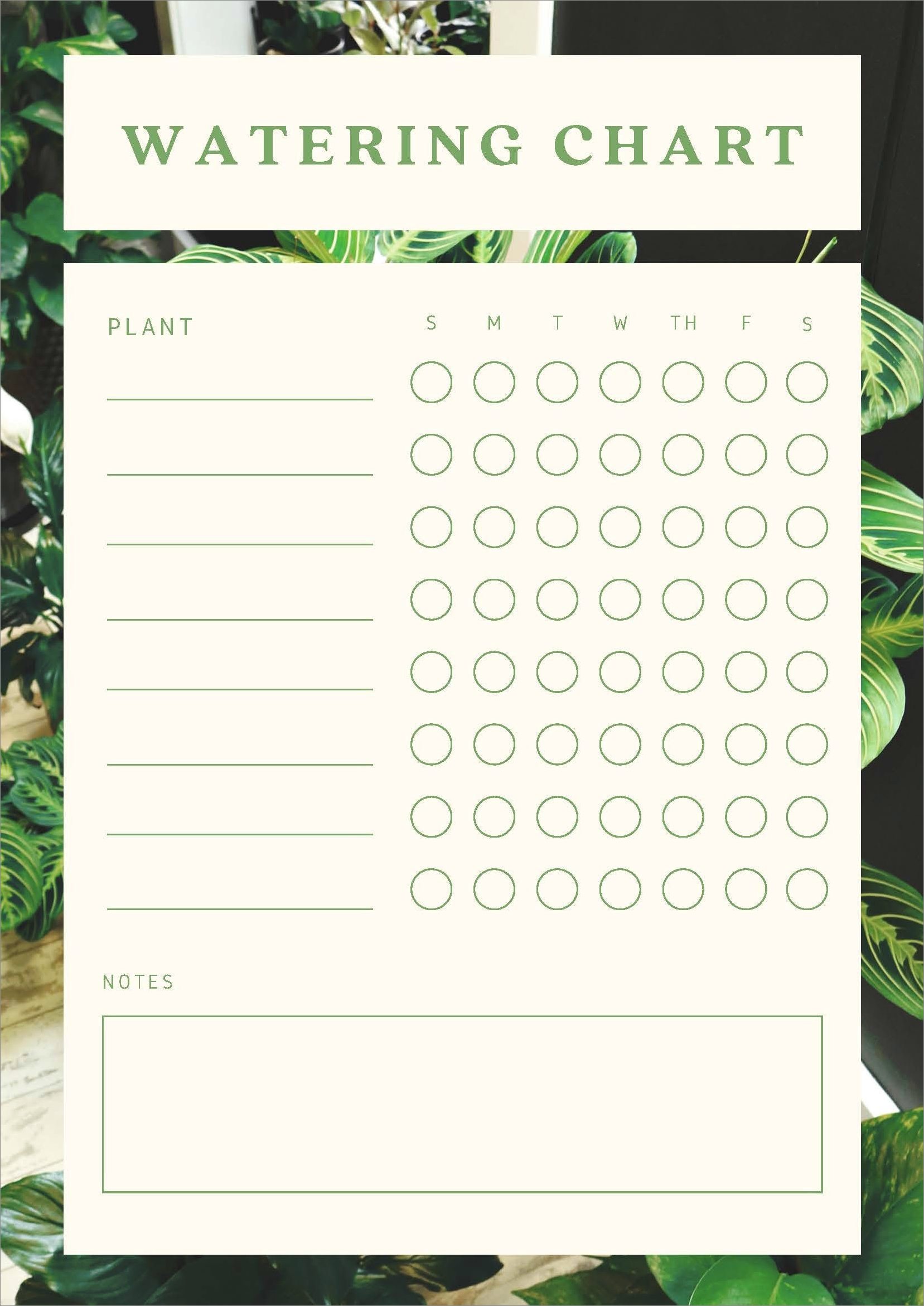
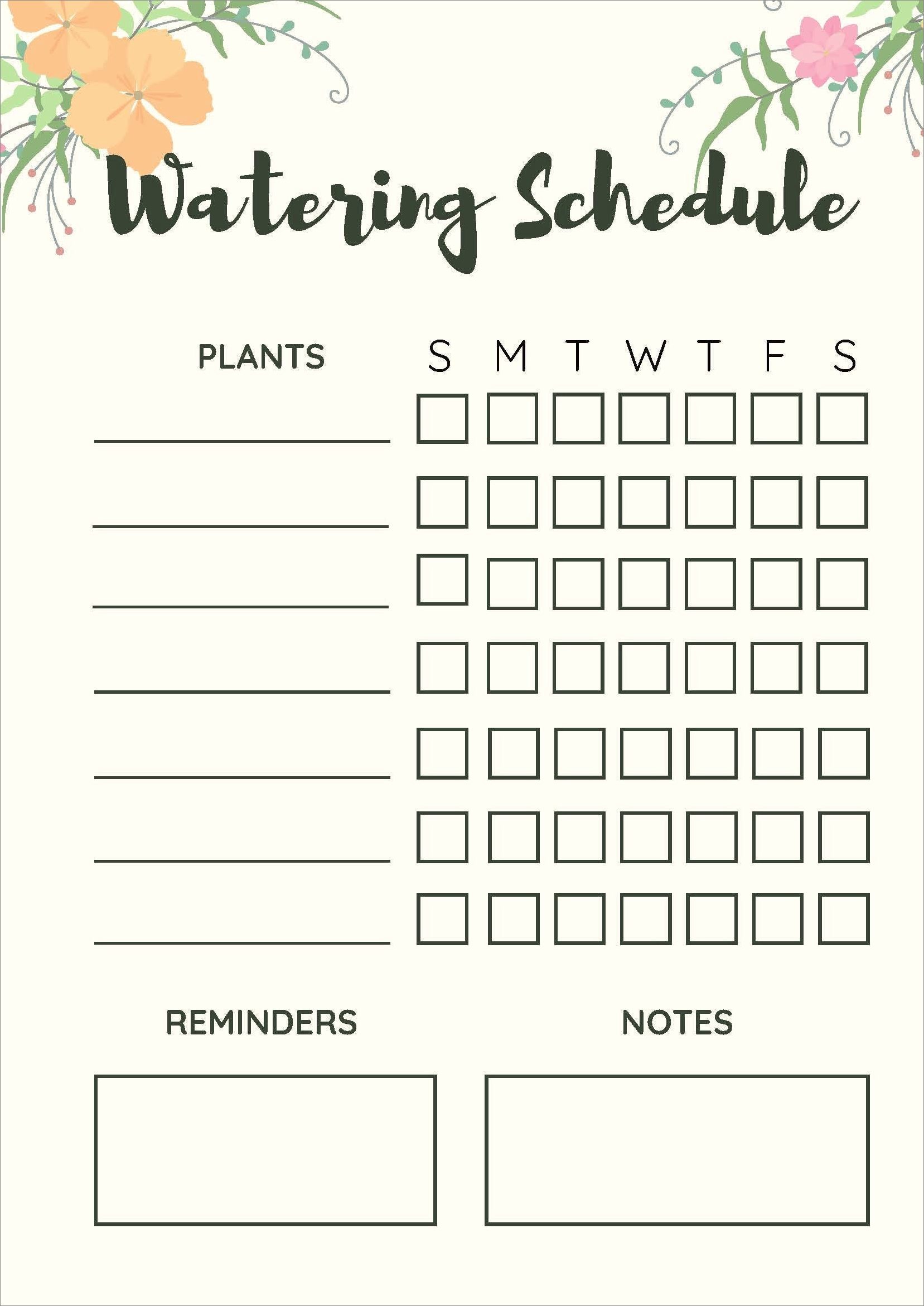
To give you an idea of how to create a plant watering schedule, here is a sample schedule for a variety of plants:
- Succulents: Water every 10-14 days, allowing the soil to dry out completely between waterings.
- Vegetables: Water 1-2 inches per week, adjusting based on rainfall and temperature.
- Tropical plants: Water 2-3 times per week, keeping the soil consistently moist but not waterlogged.
- Herbs: Water when the top inch of soil feels dry, typically every 2-3 days.
- Shrubs: Water deeply once or twice a week, allowing the water to penetrate the root zone.
- Trees: Water deeply once a week, providing enough water to reach the tree’s root system.
Conclusion
Establishing a plant watering schedule is essential for maintaining healthy and thriving plants. By considering factors such as plant type, age, climate, soil type, and container size, you can create a schedule that meets the specific needs of your plants. Remember to observe your plants, and water deeply, and adjust your schedule as necessary. With a well-planned watering routine, you’ll be able to enjoy a beautiful and flourishing garden all year round.
Plant Watering Schedule Template – Download
